By Christopher Miskimon
The North Vietnamese Army barracks at Sam Son was less than 100 miles south of the capital city of Hanoi. The base was near the coast, placing it within easy reach of the United States Navy. On March 11, 1967, the Americans came for Sam Son armed with a new weapon. The Walleye glide bomb was a free-fall, 1,000-pound munition equipped with an innovation that promised to change warfare. The nose of the Walleye contained a small TV camera that allowed the pilot to monitor its descent to the target. The age of precision weapons was dawning.
Commander Homer Smith led VA-212, an attack squadron based on the aircraft carrier Bon Homme Richard (CV-31), a World War II-era, Essex-class ship modernized for the continuing struggle of the Cold War. The squadron flew the A-4 Skyhawk, a light attack jet able to carry nearly 10,000 pounds of ordnance—more than a B-17. Smith’s A-4 was loaded with a Walleye. His cockpit held a small TV monitor to guide the weapon onto its target. The raid included other attack aircraft and fighter escorts. When it was time for his attack run, Smith aimed his plane at one of the barracks buildings.
High above the target, Smith locked his Walleye onto the selected building, put the target in his cross-hairs, and released it. The bomb dropped rapidly toward the enemy base. Its onboard guidance system used the image of the target and aim point chosen by Smith and compared it to the image on the TV camera. The glide bomb could make its own course corrections based on a comparison of the two images. This allowed the pilot to drop the Walleye and move away to avoid antiaircraft fire.
Smith stood off from his target, but stayed close enough to observe whether the new weapon would perform as advertised in actual combat. He watched the Walleye as it went straight through one of the barrack’s windows and exploded. The entire building collapsed. Over the next two days Smith and his fellow pilots repeatedly hit the Than Hoa Bridge with more Walleye bombs. Although the bombs struck the crossing accurately, they lacked sufficient explosive power to bring it down.
 A month later Smith and Lieutenant Michael Cater flew their A-4s over Hanoi on a mission against a power plant. Fearful of killing Soviet and Chinese advisers in the area, Washington ordered the Navy to use Walleyes in hope of limiting collateral damage. They reached the target and released their bombs before banking away to head for their ship. The bombs struck their target. A British diplomat in Hanoi recalled hearing the attack and noticing the fan in his office stopped turning. He went to the power plant the next day and found only a hollow shell and collapsed smokestacks.
A month later Smith and Lieutenant Michael Cater flew their A-4s over Hanoi on a mission against a power plant. Fearful of killing Soviet and Chinese advisers in the area, Washington ordered the Navy to use Walleyes in hope of limiting collateral damage. They reached the target and released their bombs before banking away to head for their ship. The bombs struck their target. A British diplomat in Hanoi recalled hearing the attack and noticing the fan in his office stopped turning. He went to the power plant the next day and found only a hollow shell and collapsed smokestacks.
Air strikes and bombing raids were only two of the jobs the U.S. Navy performed during the Vietnam War. Its warships provided gunfire support while its tiny patrol boats plied the coast and rivers, searching for the enemy. Advisers trained the South Vietnamese Navy while secretive SEAL teams quietly moved through the jungle on special missions. The service performed a myriad of tasks during the conflict and these roles are all covered in detail in Combat at Close Quarters: An Illustrated History of the U.S. Navy in the Vietnam War (Edited by Edward J. Marolda, Naval Institute Press, Annapolis, MD, 2018, maps photographs, bibliography, index, $39.95, hardcover).
Covering such a wide-sweeping topic in a single volume is a daunting task, but the editor and contributors succeed in their task. They provide comprehensive coverage of the Navy’s multifaceted involvement in Southeast Asia during the Second Indochina War. It is not a dry retelling, but instead a detailed examination of the efforts of pilots and sailors involved with many tales of individual heroism and local battles. It includes extensive illustrations and photographs, many of which accompany sidebars offering intriguing vignettes. Many of the innovations associated with Operation Desert Storm or the War on Terror were first introduced in Vietnam, and the authors show how the pioneering technologies and tactics of the Vietnam War became ubiquitous in the later wars.
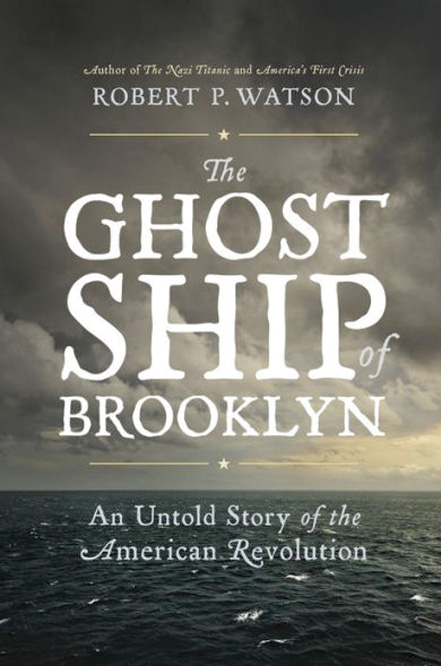 The Ghost Ship of Brooklyn: An Untold Story of the American Revolution (Robert P. Watson, Da Capo Press, Boston, MA, 2017, 288 pp., maps, photographs, appendices, notes, bibliography, index, $28.00, Hardcover)
The Ghost Ship of Brooklyn: An Untold Story of the American Revolution (Robert P. Watson, Da Capo Press, Boston, MA, 2017, 288 pp., maps, photographs, appendices, notes, bibliography, index, $28.00, Hardcover)
The HMS Jersey began her service to the English Crown in 1736 as a fourth-rate ship of the line, but it was how that time ended that made her notorious. As the Revolutionary War rocked the American colonies and growing numbers of patriot soldiers became prisoners, the aged hulk was moored offshore of Brooklyn, New York, and converted into a prison barge. There it sat alongside several other ships, all of which were soon pestilential, overcrowded, and filthy. Before long the Jersey gained a reputation as the worst of the prison hulks. Her guards were the cruelest, her rotting timbers were the most decayed, and her food was the most disease ridden. The Jersey held more than three times as many prisoners as any of the other ships, making conditions even worse. More than 11,500 men died aboard the ship, more than were lost on combat during the entire war. Yet the horrid conditions aboard the vessel served only to inspire colonists to continue the struggle for independence.
This new work on the infamous prison ship draws together the diaries of survivors, letters of the warden, contemporary news articles and official records to uncover the story of those who suffered aboard her. The author brings these untold stories to life using clear prose and detailed accounts. The book is a fascinating look at a part of the war which has been largely forgotten today.
 The Art of Renaissance Warfare: From the Fall of Constantinople to the Thirty Years War (Stephen Turnbull, Frontline Books, Yorkshire, UK, 2018, maps, photographs, notes, bibliography, index, $26.95, softcover)
The Art of Renaissance Warfare: From the Fall of Constantinople to the Thirty Years War (Stephen Turnbull, Frontline Books, Yorkshire, UK, 2018, maps, photographs, notes, bibliography, index, $26.95, softcover)
On June 11, 1476, Duke Charles of Burgundy arrived outside the walls of the town of Murten on a lake of the same name. They were fresh from a previous siege at Grandson, where the defenders had been massacred. Six days later the Burgundians began a bombardment but an attack the next day was bloodily repulsed. Charles the Bold set up his force for an attack by the approaching Swiss army, but soon relaxed his vigilance when no assault materialized.
On June 22 the Burgundian army assembled, not for battle, but to be paid. As they jostled and waited for their money, the Swiss swept down on them. The fighting quickly turned into a rout, with hundreds of Burgundians driven into the nearby lake while others simply were lined up to have their throats slit. The Swiss spared only the female camp followers. Total Burgundian casualties were estimated at 12,000 compared to 400 casualties for the Swiss. It was one of the most lopsided victories of the late 15th century.
The two centuries following the fall of Constantinople to the Ottoman Turks in 1453 were an age of the knight with all the connotations of chivalry and codes of conduct; however, it was also a time of great bloodshed and bitter combat. The author reconciles these contrasts through a rigorous study of the period with its personalities, mercenary units, and conflicts. He offers an in-depth look at how European armies fought and died during the dawn of the modern age of warfare.
 Target Saigon, Volume I: The Pretence of Peace (Albert Grandolini, Helion & Company, West Midlands, UK, 2017, 88 pp., maps, photographs, bibliography, $29.95, softcover)
Target Saigon, Volume I: The Pretence of Peace (Albert Grandolini, Helion & Company, West Midlands, UK, 2017, 88 pp., maps, photographs, bibliography, $29.95, softcover)
The Paris Peace Accords of 1973 seemed to at long last bring peace to Vietnam, a nation that had seen only war for decades, but it really signaled no more than a pause. The North Vietnamese leadership used the lull in the fighting to prepare for the next round, which they hoped would bring final victory for the communist cause. They rebuilt their shattered forces, focusing on particular on tank and mechanized units, soon amassing an armored force that rivaled those seen in World War II or the Arab-Israeli Wars. The Ho Chi Minh Trail also was repaired and expanded. South Vietnam tried to expand its air power to replace the air support they would lose with the American withdrawal. It was all a prelude to the campaign that would decide the fate of South Vietnam.
This volume is a detailed look at the preparations for the final chapter of the Vietnam War, the culmination of a decades-long struggle involving many nations. The author explains how both sides conducted training, acquired weapons, and crafted campaign and battle plans. A real strength of this book is the hundreds of photographs and illustrations showing the military personnel, ground weapons, and aircraft of both the communist North Vietnamese and democratic South Vietnamese armies.
 In the Shadows of Victory II: America’s Forgotten Military Leaders, The Spanish-American War to World War II (Thomas D. Phillips, Casemate Publishing, Havertown, PA, 2017, 288 pp., maps, photographs, notes, bibliography, index, $32.95, hardcover)
In the Shadows of Victory II: America’s Forgotten Military Leaders, The Spanish-American War to World War II (Thomas D. Phillips, Casemate Publishing, Havertown, PA, 2017, 288 pp., maps, photographs, notes, bibliography, index, $32.95, hardcover)
Fame in military history is a fickle thing, dependent on timing, the presence of observers, and simple luck. Many American service members have performed incredible acts of bravery, ingenuity or selflessness, earning the gratitude of their country, but sometimes public gratitude didn’t materialize. Other times fame for their exploits was fleeting and posterity has forgotten them. Army General Hunter Liggett trained American troops for the trenches of the Western Front and led them in combat during World War I, but he was overshadowed by John Pershing. Marine John Lejeune led an Army division during the war and has a major base named after him, yet few know who he is today. Admiral Charles Lockwood was the architect of the U.S. submarine campaign in the Pacific during World War II, which inflicted more damage to the Japanese merchant fleet and navy than anything else. Still, Lockwood is known only to history buffs and submariners. All these men did their duty well and honorably and deserve more mention than they receive, even so many years later.
This book seeks to redress that imbalance. It relates the story of more than 20 individuals whose contributions to America during time of war are substantial but unknown to most modern citizens. The author tells their stories well, adding in the backgrounds and details of the conflicts they were involved in.
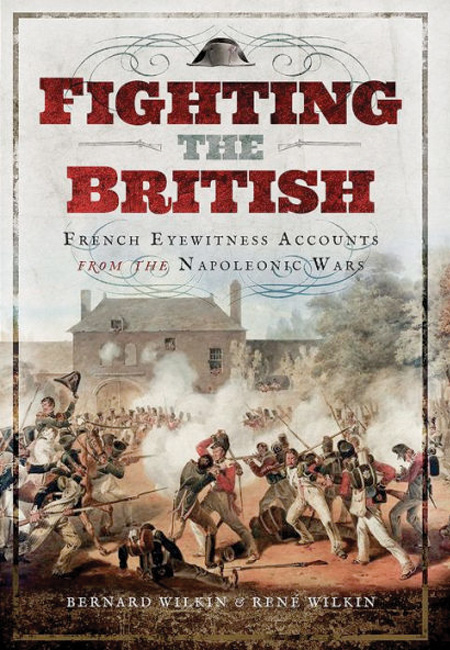 Fighting the British: French Eyewitness Accounts from the Napoleonic Wars (Bernard Wilkin and Rene Wilkin, Pen and Sword Books, South Yorkshire, UK, 2018, 189 pp., photographs, bibliography, index, $34.95, hardcover)
Fighting the British: French Eyewitness Accounts from the Napoleonic Wars (Bernard Wilkin and Rene Wilkin, Pen and Sword Books, South Yorkshire, UK, 2018, 189 pp., photographs, bibliography, index, $34.95, hardcover)
“Just because you have all been beaten by Wellington, you think he is a good general. I tell you Wellington is a bad general, the English are poor troops, and this affair is nothing more than eating breakfast.” This is what Napoleon Bonaparte told his senior officers just before the Battle of Waterloo. Whether he believed his words or was simply trying to bolster the morale of his generals is unknown, but hardly had his words been spoken than he and his army became embroiled in the fight of their lives. The fate of Europe rested on the outcome of the battle.
“Death was flying everywhere; whole ranks were destroyed by grapeshot but nothing could stop us,” wrote a French officer. “I hear only the noise of sabers penetrating our cavalier’s cuirasses: the enemy is doing a dreadful slaughter,” added a French cavalryman. After the battle, a French doctor saw Prince Jerome Bonaparte shoot a British prisoner with his pistol. Then, he berated the doctor and his staff for not treating the poor man.
As might be expected, the majority of the English-language books on the Napoleonic Wars focus on the British side of the fighting. Yet this new work by a father and son team of Belgian historians brings the French side of the fighting to the light. It uses hundreds of eyewitness accounts by French officers and soldiers to show how they viewed the various battles and campaigns of the era. Each chapter covers one of those periods or campaigns, giving the reader a well-organized view of the conflict.
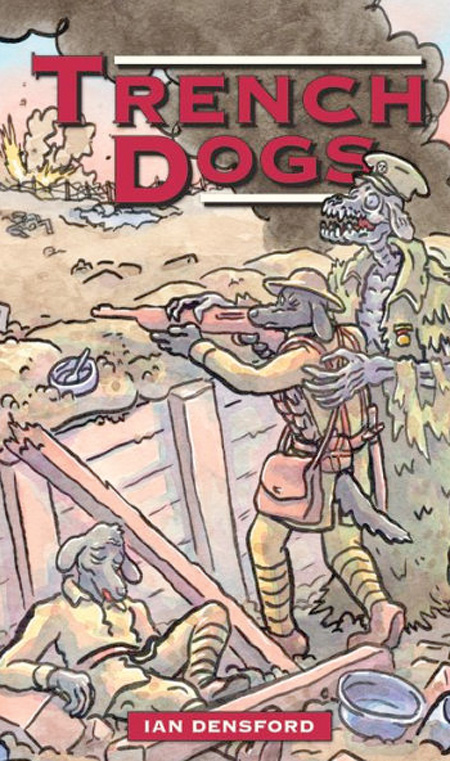 Trench Dogs (Ian Densford, Naval Institute Press, Annapolis, MD, 2018, 184 pp., illustrated, $18.95, softcover)
Trench Dogs (Ian Densford, Naval Institute Press, Annapolis, MD, 2018, 184 pp., illustrated, $18.95, softcover)
History is becoming a lost art in the modern era and there is always a question of how to pass on an appreciation for military history to a young person. The Naval Institute Press has introduced a new series of graphic novels intended to interest younger readers. This work is a fictional account of troops on the front lines and in the trenches of World War I.
The author collected a number of first-hand accounts from the war and used them to create his story. He conveys the war in gritty terms, showing the mud and devastation the combatants experienced, along with what they went through after the war ended. The illustrations are vivid but not gratuitous in their depictions of violence and bloodshed, rather seeking to surprise the reader with the brutality of the war through the eyes of those who were there. This work and several others are being released through Dead Reckoning, an imprint of the Naval Institute Press.
 American Naval History: A Very Short Introduction (Craig L. Symonds, Oxford University Press, Oxford, UK, 2018, 144 pp., maps, photographs, notes, bibliography, $11.95, softcover)
American Naval History: A Very Short Introduction (Craig L. Symonds, Oxford University Press, Oxford, UK, 2018, 144 pp., maps, photographs, notes, bibliography, $11.95, softcover)
The U.S. Navy is arguably more powerful than the rest of the world’s navies combined, but this was not always so. It was born during the American Revolution as a small force with nothing larger than a frigate in its squadrons. During the intervening centuries it grew quickly during times of war or crisis, only to shrink again when the threat ended. For much of its history it was little more than a force for coastal defense and the enforcement of the Monroe Doctrine. With the advent of the 20th century, however, it grew into a world-ranging fleet, able to take the battle to any foe no matter the place or time. As America’s place in the world evolved, so did the U.S. Navy.
This new work is part of Oxford’s new series called “Very Short Introductions” in which complex subjects are explained simply and concisely, but with attention paid to how the topic has affected history and society. This edition is written by a professor emeritus of the U.S. Naval Academy and a recognized expert with numerous works to his credit. It succinctly encapsulates its broad subject into an enjoyable and readable work.
 Greek Hoplite versus Persian Warrior 499-479 BC (Chris McNab, Osprey Publishing, Oxford, UK, 2018, 80 pp., maps, photographs, bibliography, index, $20.00, softcover)
Greek Hoplite versus Persian Warrior 499-479 BC (Chris McNab, Osprey Publishing, Oxford, UK, 2018, 80 pp., maps, photographs, bibliography, index, $20.00, softcover)
For half a century the mighty armies of the Persian Empire made war with the city-states of Greece. This brought into conflict the famous spear and shield-armed Greek hoplite and his counterpart, the Persian infantryman, armed with spear and bow. Each had its own unique methods of training and tactics. One of the most memorable aspects of Greek warfare was the phalanx, an interlocking mass of shield-bearing, spear-armed men. These two disparate forces also fought the most important of the ancient battles from a Western perspective, including Marathon, Thermopylae, and Plataea. Marathon and Plataea were Greek victories; although the Greeks were defeated at Thermopylae, the last stand of the Spartans has become a byword for duty, bravery, and sacrifice. Despite the passage of millennia, the Greco-Persian wars are still studied today.
This book is among the latest in Osprey’s Combat Series, which compares and contrasts the famous military formations which met in battle throughout history. Each volume reveals the culture behind each force and delves into their training, equipment and tactics, including how these tactics really looked on the battlefield and how they had to adapt to new enemies. Like others in the series, this title provides a concise yet thorough examination of its subject matter with lavish artwork.
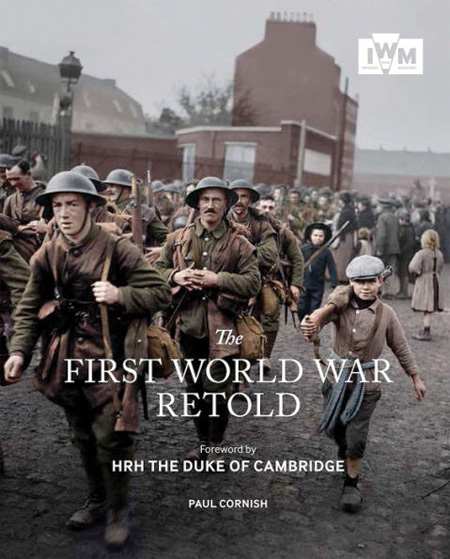 The First World War Retold (Paul Cornish, Imperial War Museum, London, UK, 2014, 256 pp., photographs, bibliography, index, $30.00, softcover)
The First World War Retold (Paul Cornish, Imperial War Museum, London, UK, 2014, 256 pp., photographs, bibliography, index, $30.00, softcover)
World War I had a profound impact upon the world. Among the nation’s hardest hit by the conflict was Great Britain. It is difficult to find a village in England without a memorial to its fallen from that conflict. More than 16 million people lost their lives worldwide and the course of human history was forever altered. It was during this conflict that the Imperial War Museum was created, giving the nation a place to remember and commemorate the sacrifice of so many of its best citizens. In the intervening century since the war’s end that institution has done its best to honor that sacrifice.
The author retells events made more vivid by the inclusion of images of the museum’s vast collections of artwork, photographs, and artifacts. These images bring the story to life, putting faces on the horror and struggle the war entailed. The war was far more than the dry retelling of battles, dates and casualty figures. It ruined lives even for the survivors, changed landscapes, and ended entire nations while giving birth to new ones. This book allows the reader to study this through the medium of the museum’s chosen objects, many of them artifacts that one might never see elsewhere.
Short Bursts
 The Final Mission of Extortion 17 (Ed Darack, Smithsonian Books, 2017, $24.95, hardcover) This is the story of the deadliest helicopter crash in the history of American special operations. It was brought down by Afghan insurgents while carrying Navy SEALs on a mission.
The Final Mission of Extortion 17 (Ed Darack, Smithsonian Books, 2017, $24.95, hardcover) This is the story of the deadliest helicopter crash in the history of American special operations. It was brought down by Afghan insurgents while carrying Navy SEALs on a mission.
The Crossbow (Mike Loades, Osprey Publishing, 2018, $20.00, softcover) The crossbow is one of history’s most famous weapons. This book covers its development and use over the centuries.
Yom Kippur: No Peace, No War, October 1973 (Peter Baxter, Pen and Sword Books, 2017, $22.95, softcover) This is part of the publisher’s new series on Cold War conflicts. Although the initial Arab attack caught the Israelis off guard, the resilient nation rebounded to win a decisive victory.
Swords and Swordsmen (Mike Loades, Pen and Sword Books, 2017, $39.95, softcover) This is a history of the sword from Ancient Egypt to the American Civil War. It charts the lives of various sword-wielding warriors through the ages.
Drone Warrior: An Elite Soldier’s Inside Account of the Hunt for America’s Most Dangerous Enemies (Brett Velicovich and Christopher Stewart, Dey St. Publishing, $27.99, hardcover) The author was an intelligence analyst in the U.S. special operations community. This book chronicles his duties pursuing and targeting high-level terrorist operatives.
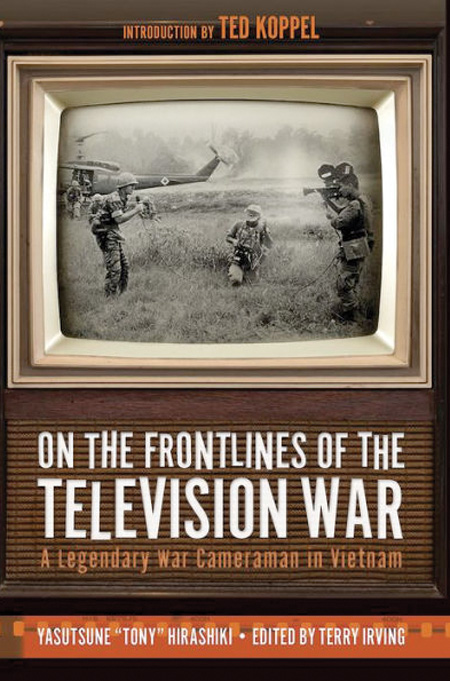 The 1st Infantry Division and the US Army Transformed: Road to Victory in Desert Storm 1970-1991 (Gregory Fontenot, University of Missouri Press, 2017, $36.95, hardcover) This is the story of how the U.S. Army rebuilt itself after Vietnam into the war-winning force of the late Cold War. The tale culminates in the division’s role in the Gulf War.
The 1st Infantry Division and the US Army Transformed: Road to Victory in Desert Storm 1970-1991 (Gregory Fontenot, University of Missouri Press, 2017, $36.95, hardcover) This is the story of how the U.S. Army rebuilt itself after Vietnam into the war-winning force of the late Cold War. The tale culminates in the division’s role in the Gulf War.
On the Frontlines of the Television War: A Legendary War Cameraman in Vietnam (Yasutsune Hirashiki, Casemate Publishers, 2017, $32.95, hardcover) The author spent 10 years as a cameraman in Vietnam. His autobiography covers his arrival in country in 1966 to the fall of Saigon in 1975.
Tigers at War: The Princess of Wales Royal Regiment, 25 Years in Front-line Modern Conflict (Michael Scott, Hellion Books, $59.95, hardcover) This famous regiment has been active in the post-Cold War world. The work covers the various conflicts in which it has served.
Vietnam War Army Helicopter Nose Art (John Brennan, Fonthill Media, 2018, $34.95, softcover) This book contains more than 300 images from Army aviation veterans of their helicopters. Most are in color with accompanying background information.
The RAF: 1918-2018 (Julian Hale, Shire Books, 2018, $14.00, softcover) This concise edition celebrates the centennial of the Royal Air Force. It is well illustrated with chapters on each major era of the organization.
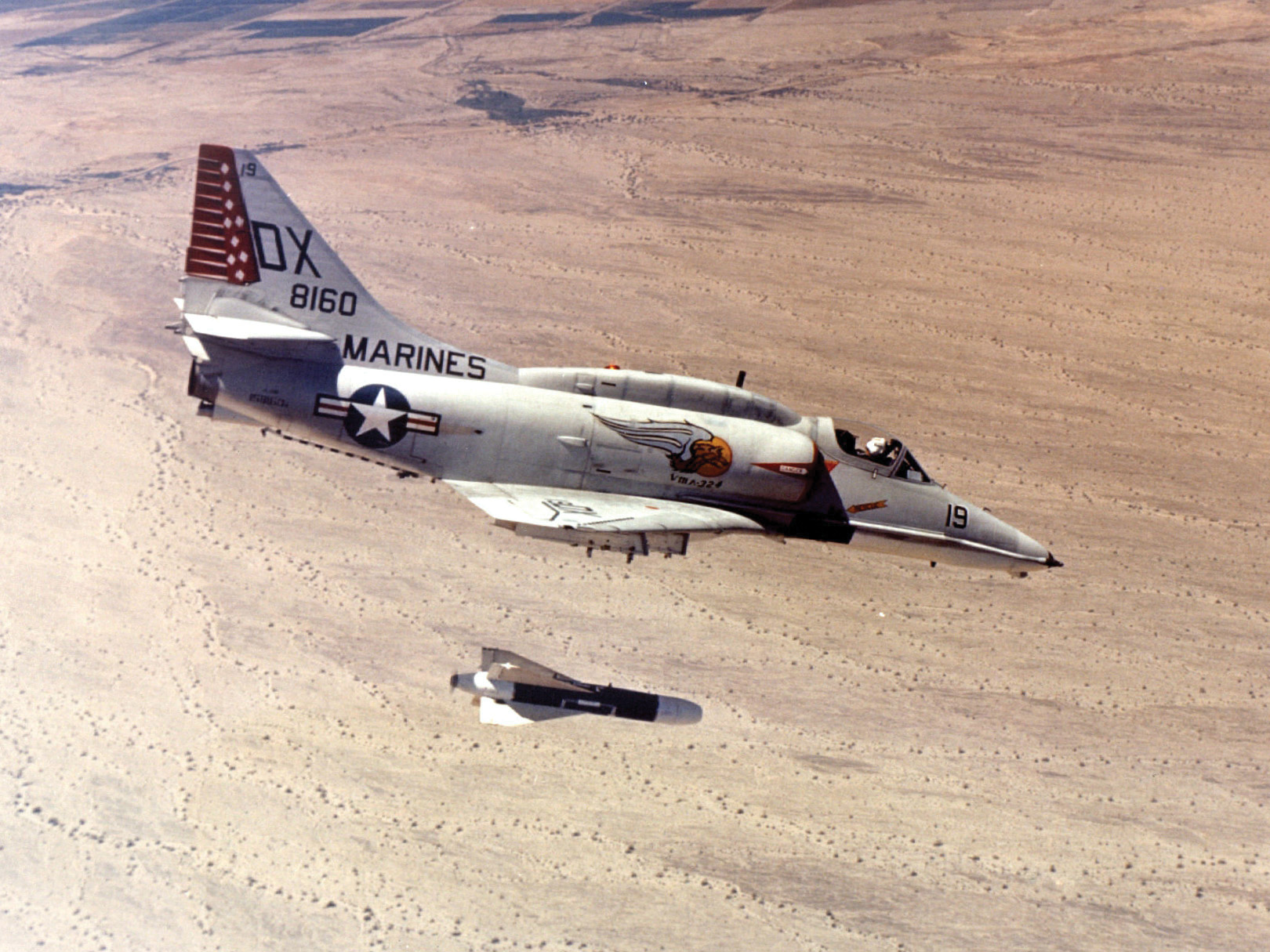
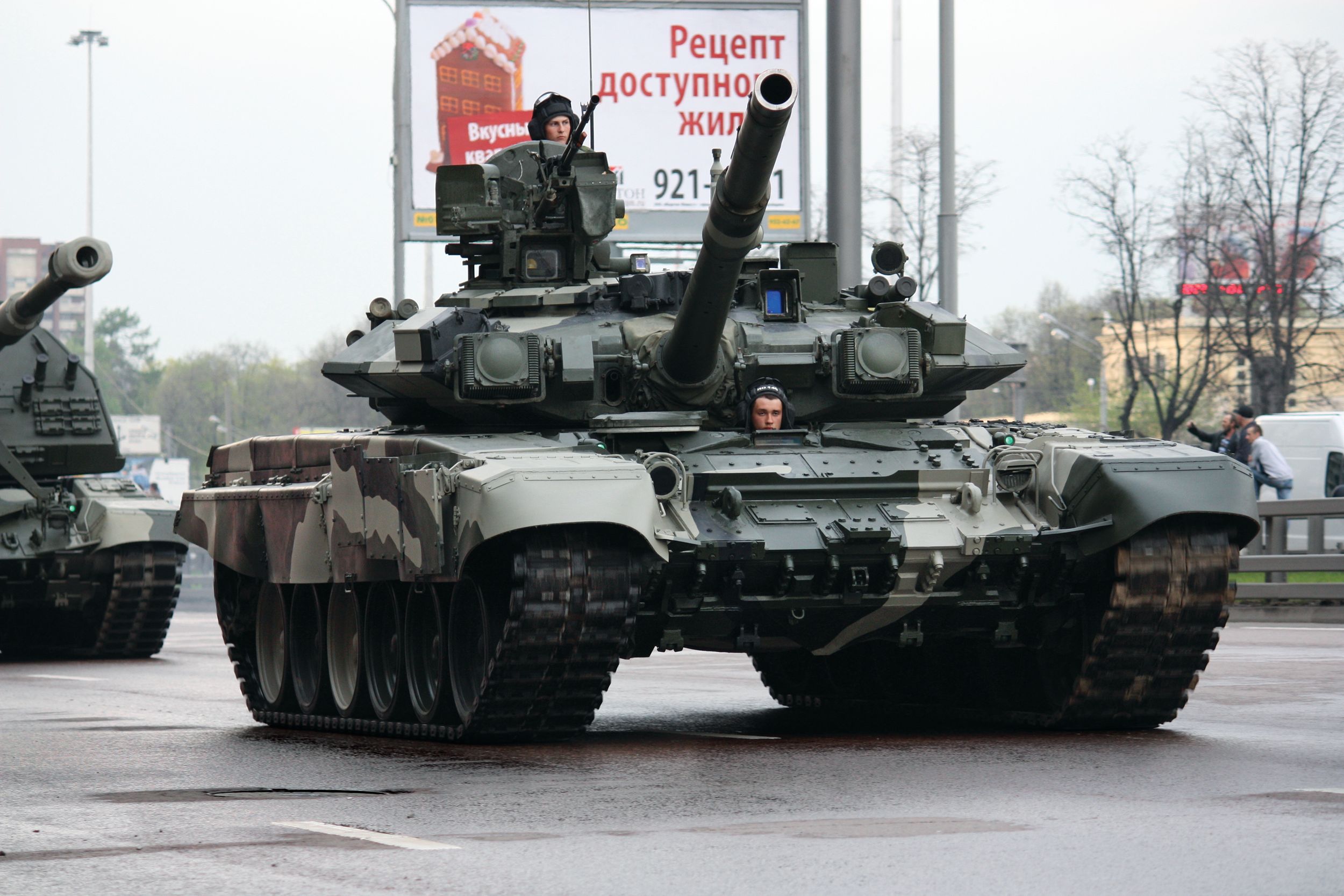
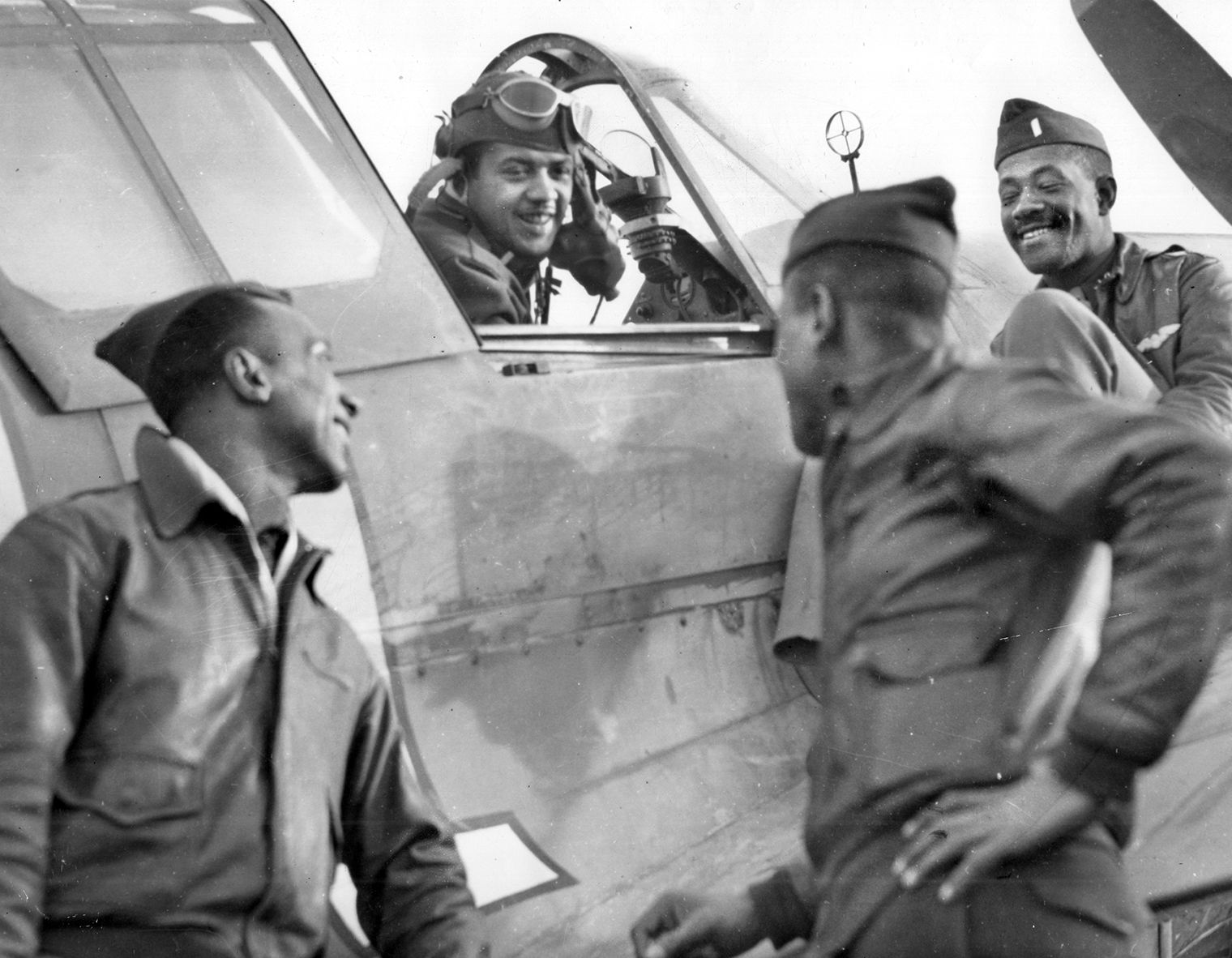
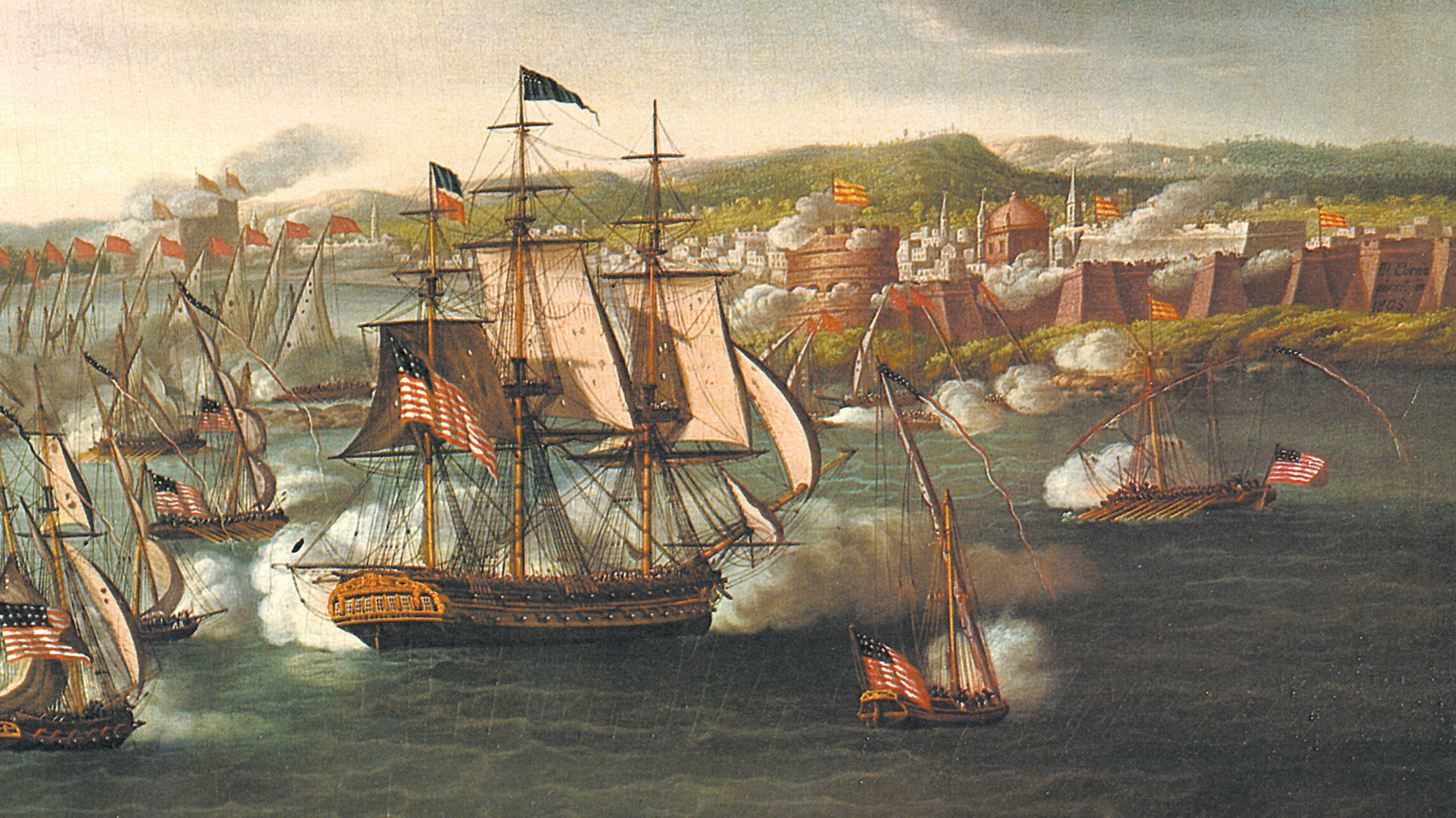
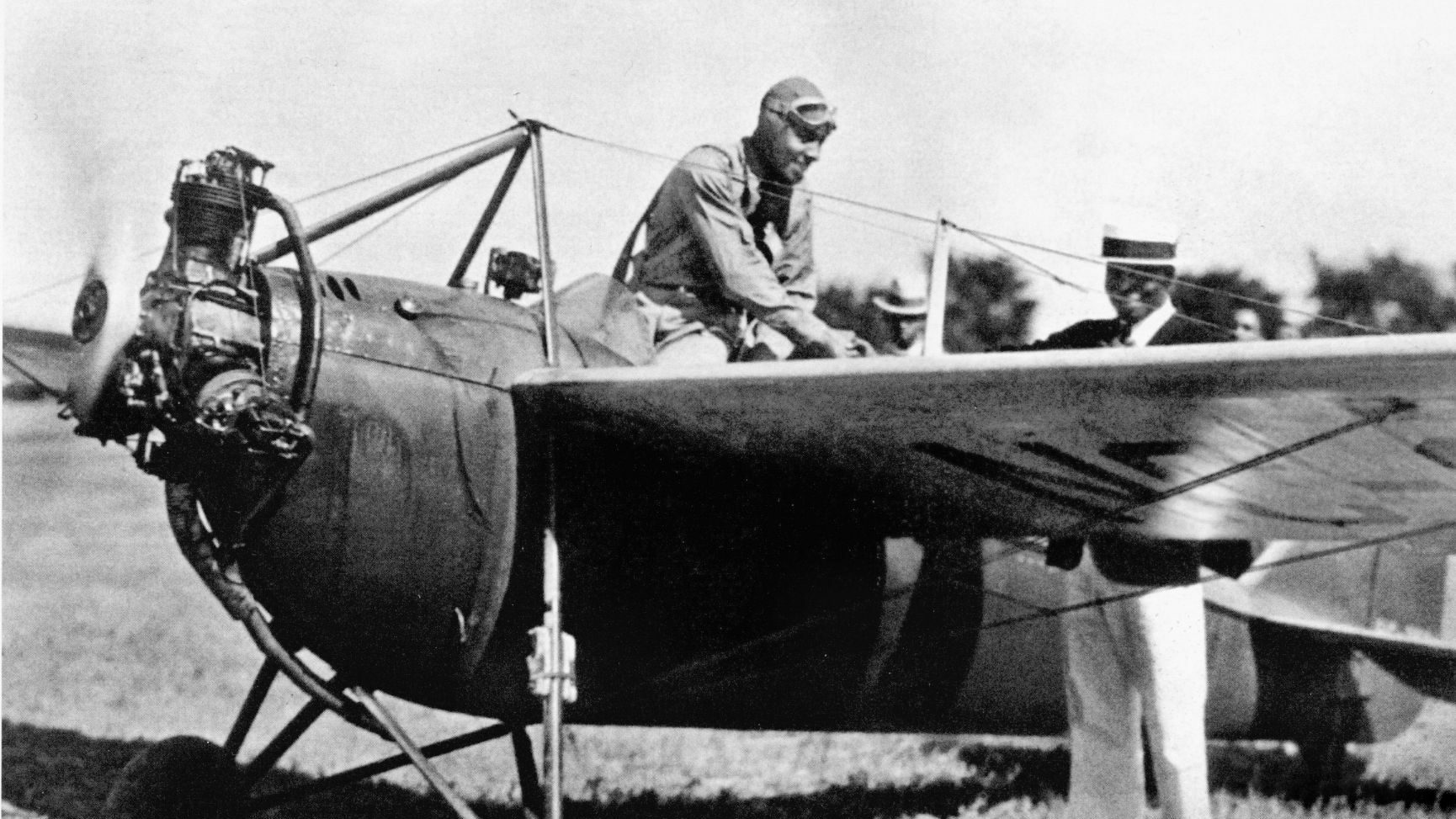
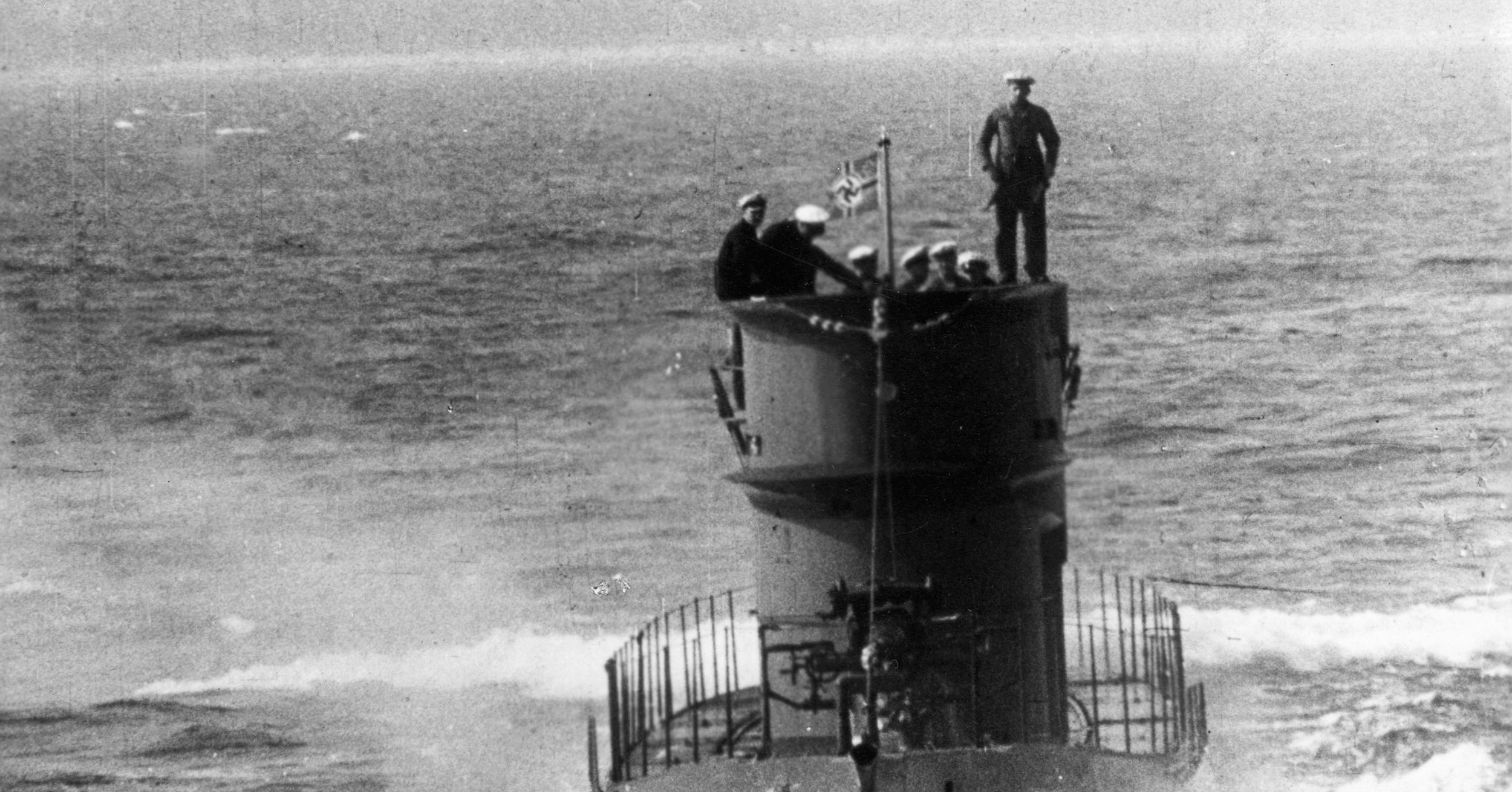
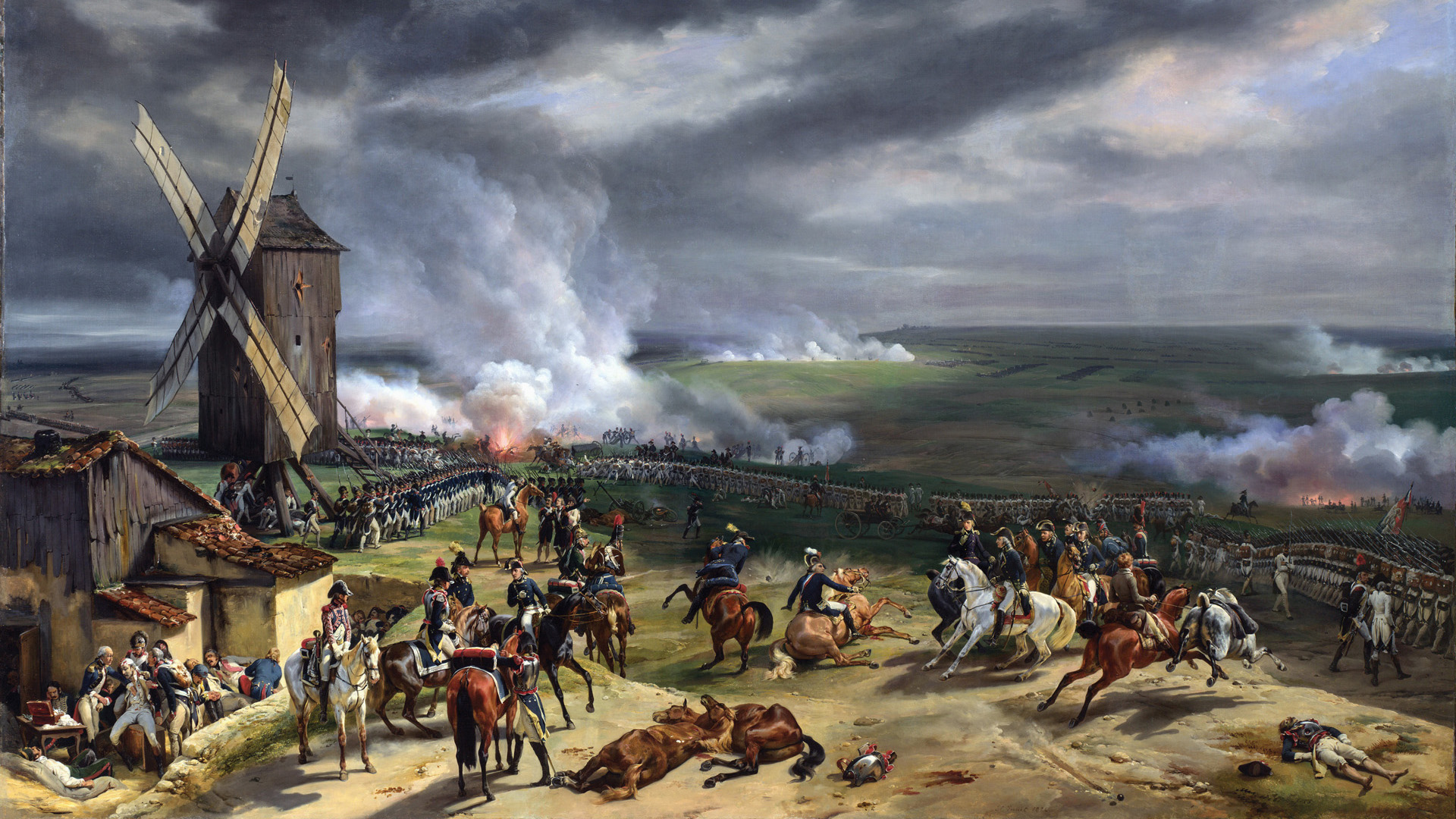
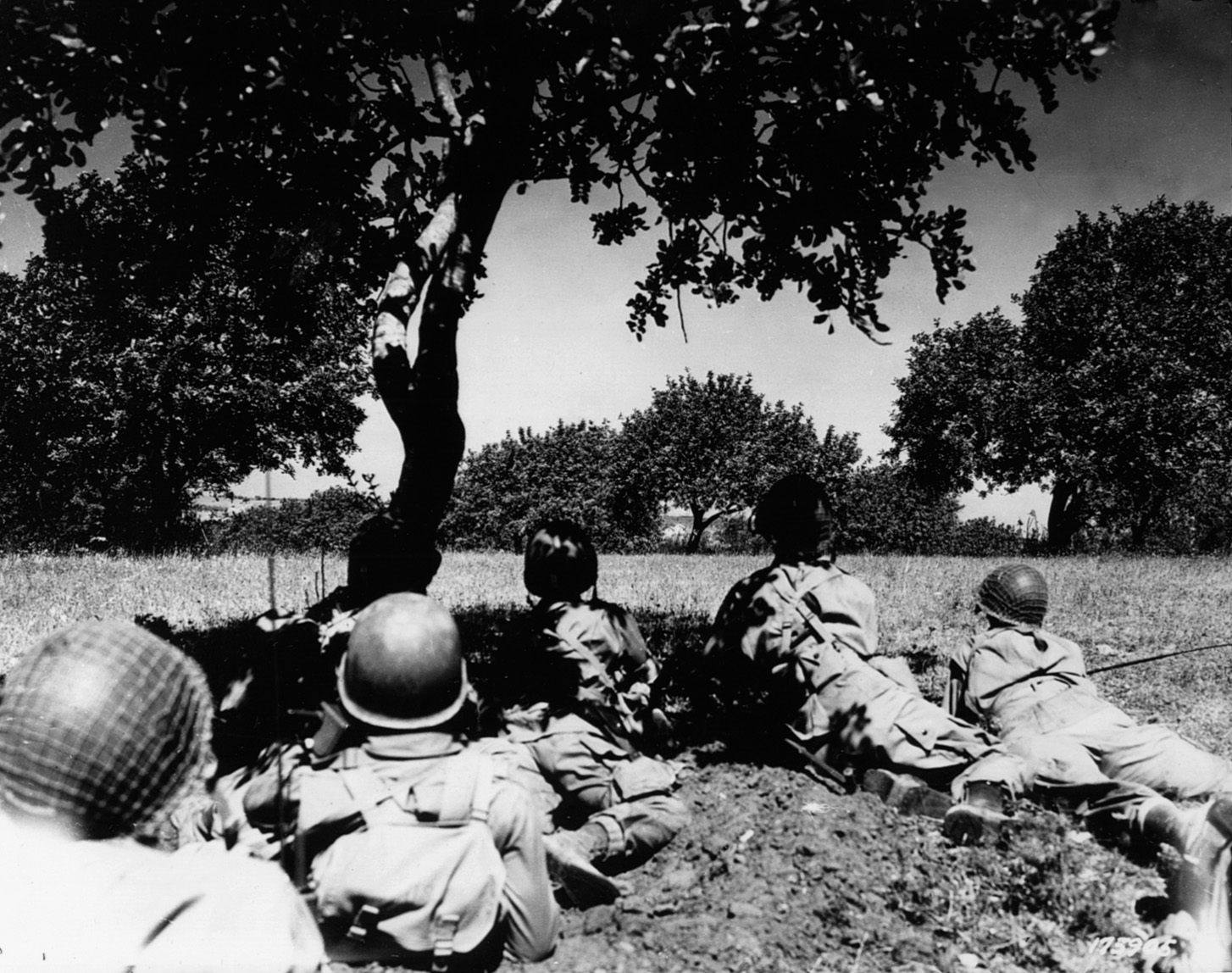
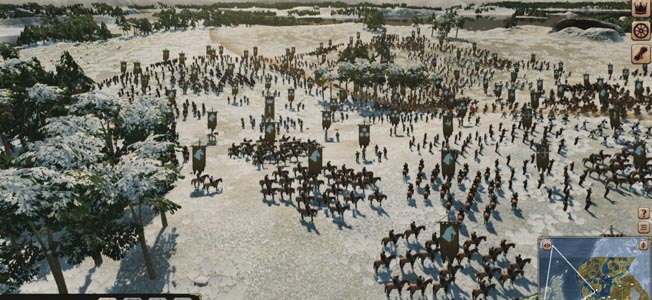
Join The Conversation
Comments
View All Comments